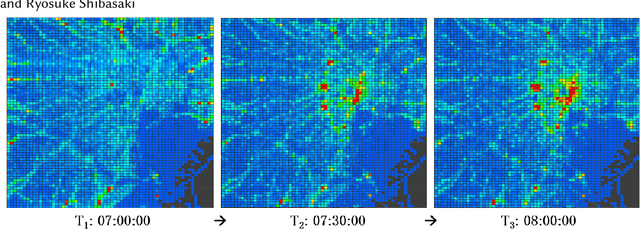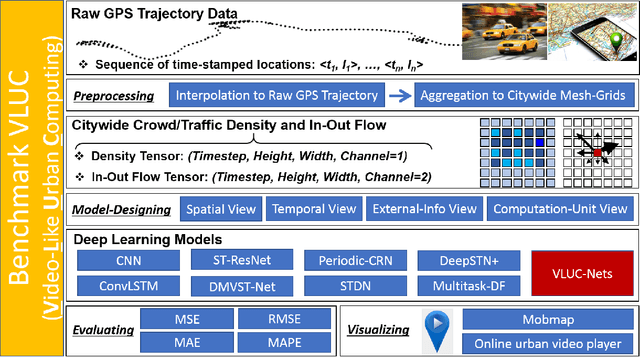VLUC: An Empirical Benchmark for Video-Like Urban Computing on Citywide Crowd and Traffic Prediction
Paper and Code
Nov 16, 2019



Nowadays, massive urban human mobility data are being generated from mobile phones, car navigation systems, and traffic sensors. Predicting the density and flow of the crowd or traffic at a citywide level becomes possible by using the big data and cutting-edge AI technologies. It has been a very significant research topic with high social impact, which can be widely applied to emergency management, traffic regulation, and urban planning. In particular, by meshing a large urban area to a number of fine-grained mesh-grids, citywide crowd and traffic information in a continuous time period can be represented like a video, where each timestamp can be seen as one video frame. Based on this idea, a series of methods have been proposed to address video-like prediction for citywide crowd and traffic. In this study, we publish a new aggregated human mobility dataset generated from a real-world smartphone application and build a standard benchmark for such kind of video-like urban computing with this new dataset and the existing open datasets. We first comprehensively review the state-of-the-art works of literature and formulate the density and in-out flow prediction problem, then conduct a thorough performance assessment for those methods. With this benchmark, we hope researchers can easily follow up and quickly launch a new solution on this topic.
 Add to Chrome
Add to Chrome Add to Firefox
Add to Firefox Add to Edge
Add to Edge